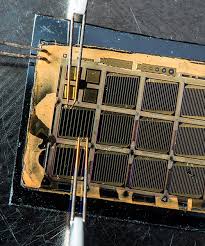
Breaking News
 Elon Tells Rogan the Real Reason Democrats are Prolonging the Government Shutdown [WATCH]
Elon Tells Rogan the Real Reason Democrats are Prolonging the Government Shutdown [WATCH]
 Newsom: Trump Is Trying to Rig the Election -- He Knows GOP Will Lose
Newsom: Trump Is Trying to Rig the Election -- He Knows GOP Will Lose
 There is zero justification for the Department of Justice's silence while the most serious...
There is zero justification for the Department of Justice's silence while the most serious...
 Gabbard Says Trump Has Ended America's Era Of 'Regime Change'
Gabbard Says Trump Has Ended America's Era Of 'Regime Change'
Top Tech News
 The 6 Best LLM Tools To Run Models Locally
The 6 Best LLM Tools To Run Models Locally
 Testing My First Sodium-Ion Solar Battery
Testing My First Sodium-Ion Solar Battery
 A man once paralyzed from the waist down now stands on his own, not with machines or wires,...
A man once paralyzed from the waist down now stands on his own, not with machines or wires,...
 Review: Thumb-sized thermal camera turns your phone into a smart tool
Review: Thumb-sized thermal camera turns your phone into a smart tool
 Army To Bring Nuclear Microreactors To Its Bases By 2028
Army To Bring Nuclear Microreactors To Its Bases By 2028
 Nissan Says It's On Track For Solid-State Batteries That Double EV Range By 2028
Nissan Says It's On Track For Solid-State Batteries That Double EV Range By 2028
 Carbon based computers that run on iron
Carbon based computers that run on iron
 Russia flies strategic cruise missile propelled by a nuclear engine
Russia flies strategic cruise missile propelled by a nuclear engine
 100% Free AC & Heat from SOLAR! Airspool Mini Split AC from Santan Solar | Unboxing & Install
100% Free AC & Heat from SOLAR! Airspool Mini Split AC from Santan Solar | Unboxing & Install
 Engineers Discovered the Spectacular Secret to Making 17x Stronger Cement
Engineers Discovered the Spectacular Secret to Making 17x Stronger Cement
Two new solar cells break records, including highest efficiency ever

The top honor was claimed by researchers at the National Renewable Energy Laboratory (NREL), who have developed a new solar cell with an efficiency of 47.1 percent. That makes it the most efficient solar cell of any kind in the world – for now, at least. These records have a tendency to be broken pretty regularly.
The device is what's known as a six-junction III-V solar cell, meaning it's made up of six different types of photoactive layer. Each of these is comprised of various III-V materials, named after their positions on the periodic table, which collect energy from different parts of the light spectrum. In total there are around 140 layers, packed into a solar cell that's thinner than a human hair.
It's also worth noting that the record was broken under light focused to be about 143 times stronger than natural sunlight. While the efficiency of this design is obviously going to drop in real-world uses, the team says that the device could be built with a mirror to focus the sunlight onto the cell.
The team also tested a variation of this cell under light equivalent to one Sun, and it still achieved an efficiency record of 39.2 percent.



